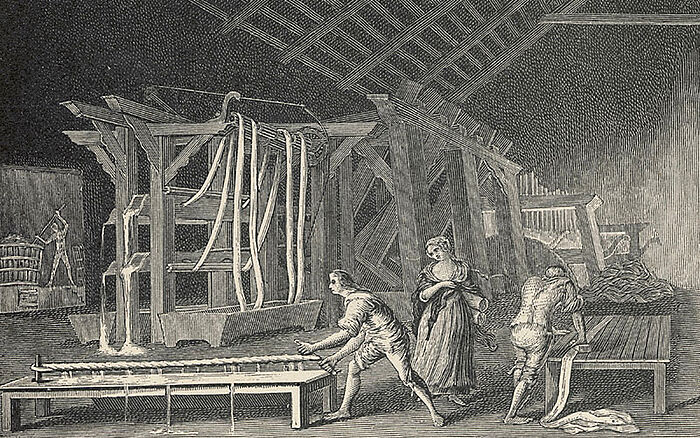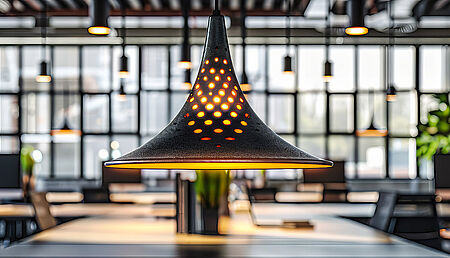
Design patents and design rights: What are they and what do they do?
Design protection does not occupy the same number of Intellectual Property (IP) conversations as patents or trademarks, but that does not mean designs are less important. There are times when a novel presentation can be a more lucrative IP asset than the product itself.
Recognizable designs are critical to the aesthetic appeal of goods and function as brand elements in a similar way to your trademarks. To obtain the proper protection for your designs, it is necessary to understand the distinctions between the various rights available for this IP category: In the United States, "design patent" is the official term, and you will sometimes hear this used informally elsewhere in the world. But most jurisdictions use different terms – with similarly varied scopes of protection.
As such, it is essential to undertake the relevant design filing and registration procedures in all major markets where you operate.
What is the difference between a design patent and a design right?
In a nutshell, designs describe the visual appearance of a product or device — configuration, shape, surface details or any combination thereof. Whether it is two-dimensional (as in colors and patterns) or three-dimensional (as in form), a design is strictly associated with its corresponding product and cannot exist as an independent object.
Though the general classification for this type of IP is "industrial design right," the name does not imply any restriction to non-consumer goods. Jewelry and smartphones are as eligible as heavy machinery. As mentioned, "design patent" is the terminology used in the United States as the registration procedure is roughly analogous to that for utility patents, albeit with a slightly shorter processing time. Over the last year, the average total pendency for design patents has fluctuated around the 21-month mark compared to a general 25-month trend for utility patents.
The main reason for this lengthy wait is that a substantive examination of the design is carried out by the United States Patent and Trademark Office (USPTO); that is, the application is compared against prior art for its originality.

In day-to-day life, we tend to distinguish between "invention" as a work of intellectual creativity and "ornamentation" as the fruit of artistic expression. However, this separation does not always apply in IP law, where aesthetic and practical ingenuity come together in the design patent / right.
In other parts of the world, design rights are not formally referred to as "patents." Depending on the jurisdiction, terms include "design right," "industrial design" or simply "design." But these varied names all describe the same concept.
Decoration, decoration, decoration
The ornamental aspect is key to determining what is and is not a design feature. And though this strictly covers only the non-functional characteristics of a product, the utilitarian and aesthetic elements of an invention are often difficult to separate. Thus, a design and a conventional patent can apply to the same article and provide legally distinct protection. For example, consider a handbag:
- The handbag's unique shape and surface patterning are both ornamental characteristics. Materials may also be eligible so long as they are not structural.
- Conversely, if you were to devise a novel and non-obvious clasp for that handbag, that would be a functional feature. The clasp would have to be protected using a utility patent.
Further examples of protectable designs include:
- The unique shape of a kitchen appliance, such as a refrigerator.
- A novel cut or embroidery applied to a dress or other article of clothing.
- The outward design of smartphones, such as Apple's iPhone and Samsung's Galaxy line.
Depending on a design's specific nature, it may be simultaneously eligible for copyright protection in some jurisdictions, including the European Union, Mexico, China and Brazil. Conversely, in Japan, IP assets eligible for design registration are typically not also copyright-eligible, whereas in the United States, copyrighting the ornamental aspects of a useful article is only possible when those elements can be perceived as independent works of art. As we have seen, this is not the case with design patents.
Changing the fabric of IP: a brief history of industrial designs
So, how did designs become part of the IP universe? Compared to patents and trademarks, they are a fairly recent phenomenon.
Design protection first surfaced in the United Kingdom with 1787's Designing and Printing of Linen Act — but it only provided two months of IP protection. Updated legislation in 1839 and 1842 eventually extended this to a maximum of one year for textiles and three years for some other items. The United States began issuing design patents in 1843.

Linen production was an integral part of British and Irish industry in the 18th century, so it is little wonder the first of these new exclusive rights were granted to protect the "art of designing and printing" this textile, along with cottons, calicos and muslin.
Throughout the 19th century, other nations began adopting forms of protection specifically for designs, including Germany, Japan and Russia. Interestingly, two countries known for centuries as centers of fashion and luxury goods — France and Italy — did not have design rights until the 20th century. China and the Nordic countries also only implemented domestic acts after the 1950s. In 1925, the World Intellectual Property Organization (WIPO) introduced the Hague System as the foundation of an international framework for design protection.
Trademarked brand names and logos do sometimes have a greater impact on the consumer than any particular product's appearance. But more often than not, both must work in tandem to persuade buyers.
For example, when someone purchases a Ferrari, they likely already recognize the famous prancing-horse logo, but it could be the car's sleek looks that seal the deal. Indeed, Enzo Ferrari and other Italian automotive pioneers brought in design companies like Pininfarina and Bertone to craft their road cars because they knew aerodynamic performance alone might not convince consumers. This is just one example of why the IP protection of designs is paramount.
How do you obtain design protection?
Once you have finalized the design you wish to protect, the assistance of an IP lawyer with design experience will be invaluable for navigating the various application processes around the world. Here, we take a look at some of those differences.
Start by searching
Conduct a prior art search to ensure you are not infringing upon any existing registered design. Depending on where you hope to register your IP, you may be limited to active designs in your search. However, some search tools, like DESIGNview, can show pending designs. An IP attorney will also be able to help by providing an opinion on your design's originality.
Documentation requirements
Virtually all jurisdictions require fees and the submission of a general form that includes visual renderings of the design (either drawn or photographed), an explanation of what product or products the design relates to as specified by the Locarno Classification system and an attestation of the design's authorship.
Beyond those basics, the differences mount considerably between jurisdictions. For example, a U.S. design patent application requires you to make a claim — as you would for a utility patent, but referring to ornamentation — while the European Union Intellectual Property Office (EUIPO) does not. The USPTO also demands more written descriptive detail than its European Union counterpart as the latter does not ask for descriptions of the design's visual examples.

Depending on where you are filing for design protection, the content of your application will differ. What is universal, of course, is the need to be specific. Any ambiguity in the filed drawings could compromise your coverage even if a registration is granted.
Design visuals
Some IP offices, including the USPTO and Japan Patent Office (JPO), require orthographic views to adequately disclose the design: specifically, right, left, front, rear, top and bottom views. Others, like the EUIPO, do not specify direction but have other requirements, such as that the representations be on neutral backgrounds.
You are generally restricted from using multiple colors in visual examples of your design (even for goods that would naturally come in different colors, like apparel). Alternatively, it might only be possible to use color at all by filing a petition in advance of the design filing and paying an extra fee.
Examination
In countries where design applications undergo examination, such as Japan and the United States, it can take many months for filings to be processed and approved or denied.
On the other hand, jurisdictions that do not carry out a comparison with prior art, including the United Kingdom and European Union, operate much faster: Design filings can be approved in a matter of weeks. This simpler process does not extend the life of the registered IP rights as designs, like (utility) patents, grant retroactive protection.
Keeping your designs protected
In countries like Canada, China, India, South Africa and the United States, the exclusive rights to your design can be maintained for up to 15 years. Other jurisdictions, including the European Union, United Kingdom, Brazil and Japan, allow up to 25 years of protection. These maximum durations may require renewals or extensions, typically occurring at five-year intervals. As for maintenance fees, most countries require them, with the United States being a rare exception.
The aforementioned Hague System broadens the protection of domestically registered design rights to other signatories. This accounts for 96 countries, as opposed to the Madrid System's 130 countries (for trademarks) and the 157 signatories to the Patent Cooperation Treaty (PCT).
International filings are an economical way to expand IP protections, but submitting separate applications in every country or region where you do the most business is still your best bet.
Dennemeyer's legal experts are here to help you protect the essential visual characteristics of your products, all the way through the drafting, searching and filing stages to enforcing design protection that wards off imitators and shuts down counterfeits.
Filed in

Answering the question: 'When were computers invented?' involves far more than just citing a date — it is bound up in the past, present and future of IP.

Learn the difference between trademarks and industrial design — and why each has a crucial role in building brand identity.



